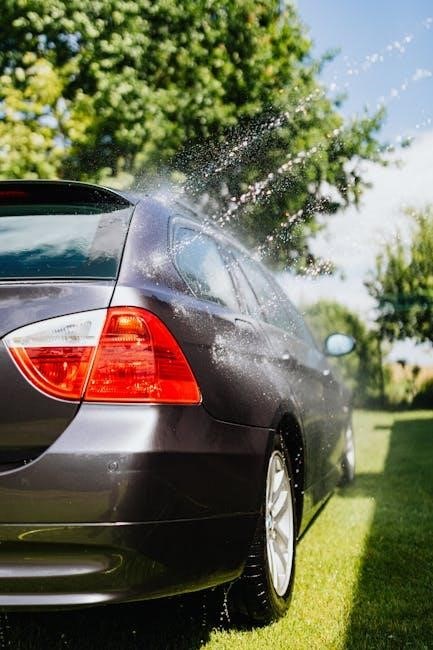Auto detailing is a comprehensive process that enhances both the exterior and interior of a vehicle, focusing on cleanliness, protection, and restoration to maintain its appearance and longevity.
1.1 What is Auto Detailing?
Auto detailing is a meticulous process of cleaning, restoring, and protecting both the interior and exterior of a vehicle to maintain its appearance and longevity. It involves specialized techniques and products to remove contaminants, scratches, and stains, ensuring the car looks its best. Detailing goes beyond routine washing; it includes paint correction, polishing, and applying protective coatings like wax or ceramic. Interior detailing focuses on sanitizing surfaces, conditioning leather, and organizing the cabin. The goal is to enhance aesthetics, preserve the vehicle’s condition, and provide a clean, comfortable environment for drivers and passengers. Regular detailing also prevents long-term damage from environmental factors and everyday wear. Whether for personal satisfaction or resale value, auto detailing is an essential practice for car enthusiasts and owners alike.
1.2 Importance of Auto Detailing
Auto detailing is essential for maintaining a vehicle’s appearance, protecting its surfaces, and preserving its value. Regular detailing prevents long-term damage from environmental factors like UV rays, dirt, and contaminants. It also enhances comfort by sanitizing interiors, eliminating odors, and ensuring a clean environment for drivers and passengers. Proper detailing can boost resale value by keeping the car in pristine condition. Additionally, it allows owners to address minor issues before they escalate, saving money on costly repairs. A well-detailed car reflects pride in ownership and attention to detail, making it stand out. By investing in detailing, owners ensure their vehicle remains functional, comfortable, and visually appealing for years to come.
1.3 Benefits of Regular Auto Detailing
Regular auto detailing offers numerous benefits that enhance both the appearance and longevity of your vehicle. It protects the exterior paint from contaminants and UV damage while maintaining a showroom-like shine. Interior detailing ensures cleanliness, removes odors, and preserves upholstery and leather surfaces. Regular detailing also boosts resale value by keeping the car in excellent condition. Additionally, it improves visibility through clean glass surfaces and prevents the buildup of harmful substances that could damage the vehicle over time. Consistent detailing also enhances the overall driving experience by creating a comfortable and hygienic environment. By prioritizing regular detailing, car owners can enjoy a safer, more enjoyable, and longer-lasting vehicle.
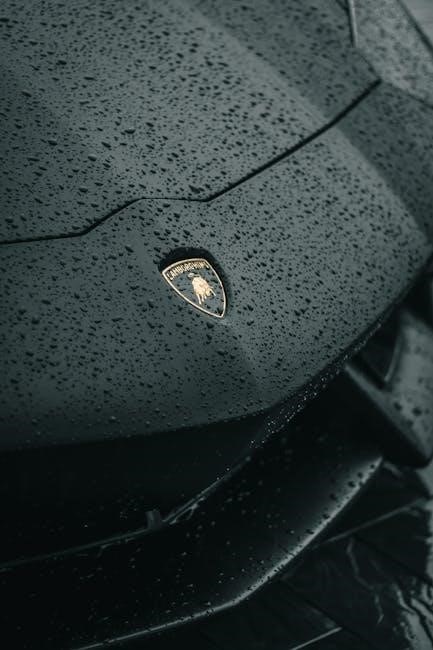
Exterior Auto Detailing

Exterior auto detailing focuses on enhancing a car’s appearance and protecting it from environmental elements. It involves thorough cleaning, polishing, and protective treatments to maintain a showroom shine.
2.1 Car Washing and Drying Techniques
Proper car washing and drying are foundational to exterior detailing. Start with a mild car detergent and avoid household cleaners, as they can strip wax and damage paint. Use a soft, microfiber sponge or mitt to gently scrub the vehicle, working from the top down to prevent dirt from redepositing onto clean areas. Rinse thoroughly with a hose to remove soap residue. For drying, use a microfiber towel or a drying aid like a blower to prevent water spots. Avoid using regular towels, as they can scratch the paint. Always wash and dry in the shade to prevent water spots from forming due to direct sunlight. Regular, proper washing and drying maintain the car’s finish and protect it from contaminants.
2.2 Paint Correction and Polishing
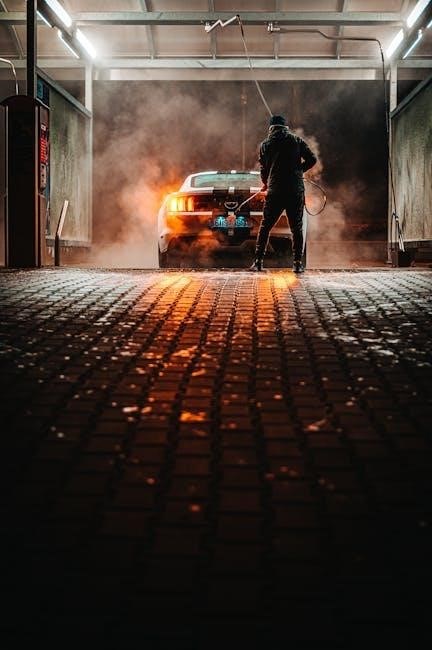
Paint correction and polishing are advanced techniques to restore and enhance a vehicle’s paint finish. These processes address imperfections like scratches, swirl marks, and oxidation. Paint correction involves using specialized tools, such as orbital polishers and buffing pads, to carefully remove defects from the clear coat. Polishing refines the surface, creating a smooth, glossy finish. Different polishing compounds and pads cater to varying levels of correction, from light hazing to deep scratches. Proper technique is essential to avoid over-correction, which can thin the paint. Regular polishing maintains the paint’s health and appearance, while also preparing the surface for protection like wax or ceramic coatings. A well-executed paint correction and polishing job can revitalize a car’s exterior, making it look like new. This step is crucial for detailing enthusiasts seeking showroom-quality results.
2.3 Clay Bar Treatment for a Smooth Finish
A clay bar treatment is a detailing process that removes contaminants from the vehicle’s paint surface, ensuring a smooth finish. The clay bar acts like a magnet, picking up dirt, tar, and overspray embedded in the clear coat. This step is essential before polishing or waxing, as it creates a clean, even surface; Start by lubricating the paint with a detailing spray to prevent scratches. Gently glide the clay bar across the surface, working in small sections. The clay will leave a smooth, glass-like feel once all impurities are removed. Regular clay bar treatments maintain the paint’s clarity and prepare it for protective coatings. Proper technique ensures the process is safe and effective, delivering a flawless finish for exterior detailing. This step is a cornerstone of professional auto detailing, enhancing both appearance and protection.
2.4 Applying Wax or Sealant for Protection
Applying wax or sealant is a critical step in exterior detailing, providing a protective barrier for the vehicle’s paint. Wax, typically made from carnauba, offers a deep shine and temporary protection, while sealants, often synthetic, last longer and offer superior defense against the elements. Both products fill minor imperfections and shield the paint from UV rays, dirt, and pollutants. To apply, use a clean, soft applicator or orbital buffer, working in thin, even layers. Allow the product to haze before buffing with a microfiber towel for a glossy finish. Regular application maintains the paint’s health and appearance, ensuring long-term durability. This protective layer is essential for preserving the vehicle’s exterior and enhancing its visual appeal. Proper application ensures the wax or sealant adheres evenly, delivering optimal results for a polished look.
2.5 Cleaning Wheels and Tires
Cleaning wheels and tires is an essential part of exterior detailing, enhancing both aesthetics and functionality. Wheels accumulate brake dust, grime, and tar, which can damage the finish if left unchecked. Start by removing the wheels for a thorough clean or use a wheel cleaner if they remain on the vehicle. A soft-bristle brush helps remove debris from spokes and crevices. For tires, use a dedicated cleaner to eliminate grime and dress the rubber for a sleek appearance. Avoid harsh chemicals that can dry out the tire material. Finally, rinse thoroughly and dry the area to prevent water spots. Regular cleaning protects the wheels and tires from corrosion and maintains their like-new condition, ensuring a polished and well-maintained vehicle. This step is vital for both visual appeal and long-term durability of the components.

Interior Auto Detailing
Interior detailing transforms the cabin, enhancing comfort and aesthetics. It involves cleaning surfaces, sanitizing, and organizing to restore a fresh, welcoming environment for drivers and passengers.
3.1 Vacuuming and Carpet Cleaning
Vacuuming and carpet cleaning are foundational steps in interior auto detailing. Start by removing loose debris using a vacuum with upholstery attachments, focusing on seats, carpets, and crevices. For stubborn stains, apply a carpet cleaner and gently agitate with a brush. Avoid over-saturating to prevent mold or mildew. Use a damp cloth to blot stains, working from the outside in. For deep cleaning, consider steam cleaning or hot water extraction for carpets and floor mats. Regular vacuuming prevents dirt buildup, while deep cleaning restores the carpet’s original appearance and eliminates odors. Always test cleaning products on a small, inconspicuous area first to ensure they won’t damage the material. Proper techniques ensure a clean, fresh interior that enhances the vehicle’s comfort and longevity.
3.2 Cleaning and Conditioning Leather Seats
Cleaning and conditioning leather seats are essential for maintaining their luxurious appearance and durability. Start by inspecting the seats for stains or wear. Use a soft-bristle brush to gently remove dirt from creases and stitching. Apply a high-quality leather cleaner using a microfiber cloth, working in circular motions to avoid scratching. Wipe away dirt and cleaner thoroughly, ensuring no residue remains. After cleaning, apply a leather conditioner to moisturize and protect the material, preventing cracks and fading. Allow the conditioner to absorb fully before use. Regular maintenance prevents deterioration and keeps the leather soft and supple. Avoid harsh chemicals or direct sunlight, which can damage the material. Proper care ensures leather seats retain their elegance and comfort over time.
3.3 Sanitizing and Deodorizing the Interior
Sanitizing and deodorizing the interior is crucial for maintaining a clean and fresh environment inside the vehicle. Begin by thoroughly vacuuming all surfaces, including upholstery, carpets, and crevices, to remove dirt and debris. Use a steam cleaner to sanitize hard-to-reach areas, such as vents and buttons, where germs often accumulate. Apply a fabric or upholstery sanitizer to eliminate bacteria and odors. For lingering smells, spray a deodorizer or use natural methods like baking soda or essential oils. Allow the vehicle to air out by rolling down windows or using fans to circulate fresh air. Regular sanitizing and deodorizing not only enhances comfort but also prevents the growth of mold and mildew. Avoid harsh chemicals that may damage materials or leave strong fumes. A clean, odor-free interior ensures a pleasant driving experience and preserves the vehicle’s value.
3.4 Glass Cleaning and Tint Maintenance
Glass cleaning and tint maintenance are essential for visibility and aesthetics. Use a high-quality glass cleaner with a microfiber towel to avoid streaks and residue. Clean both sides of the glass, including the windshield, side windows, and rear window. For tinted windows, avoid using ammonia-based products, as they can damage the tint. Instead, use a tint-safe cleaner to maintain the film’s clarity and adhesive properties. Regular cleaning prevents dirt buildup and ensures optimal visibility while driving. For heavily soiled areas, use a scrubber or squeegee with caution to avoid scratching the glass or tint. After cleaning, inspect for any missed spots and ensure the surface is spotless; Proper maintenance extends the life of the tint and enhances the overall appearance of the vehicle.
3.5 Organizing and Decluttering the Cabin
Organizing and decluttering the cabin is a crucial step in auto detailing. Start by removing all personal items, trash, and unnecessary accessories. Vacuum the seats, floor mats, and crevices to eliminate dust and debris. Wipe down surfaces, including the dashboard, center console, and door panels, using a gentle cleaner. Use storage solutions like seatback organizers or compartments to keep essential items tidy. Pay attention to small spaces, such as the glove box and cup holders, ensuring they are clean and free of clutter. Finally, arrange items like keys, manuals, and chargers in a logical and accessible manner. A well-organized cabin enhances comfort, reduces distractions, and creates a more pleasant driving environment.
Regular decluttering helps maintain the vehicle’s interior in pristine condition.
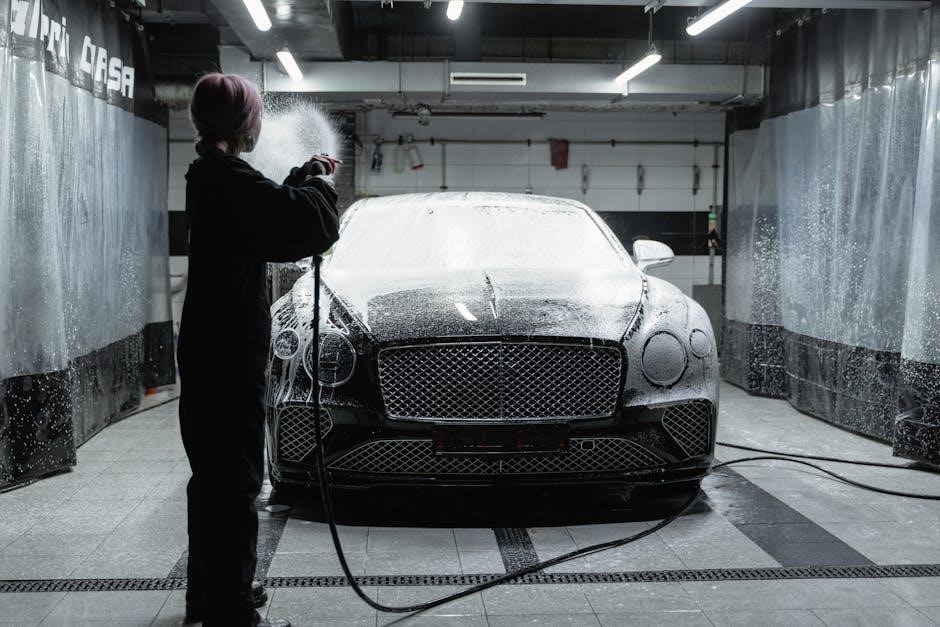
Additional Services in Auto Detailing
Additional services enhance detailing results, offering interior sanitizing, paint protection film, and ceramic coatings for extended durability and protection.
4.1 Ceramic Coating for Long-Term Protection
Ceramic coating is a advanced protective treatment for your vehicle’s paint and surfaces. It forms a durable, hydrophobic layer that repels water, dirt, and contaminants, reducing maintenance efforts. Unlike traditional wax, ceramic coatings last for several years, providing consistent protection against UV rays, oxidation, and minor scratches. The coating is applied to the paint, wheels, and glass, ensuring a glossy finish and easier cleaning. It’s a popular choice for car enthusiasts seeking long-term protection without frequent detailing. Professional application ensures proper bonding and maximum durability, making it a worthwhile investment for preserving your car’s appearance and value.
4.2 Paint Protection Film Installation
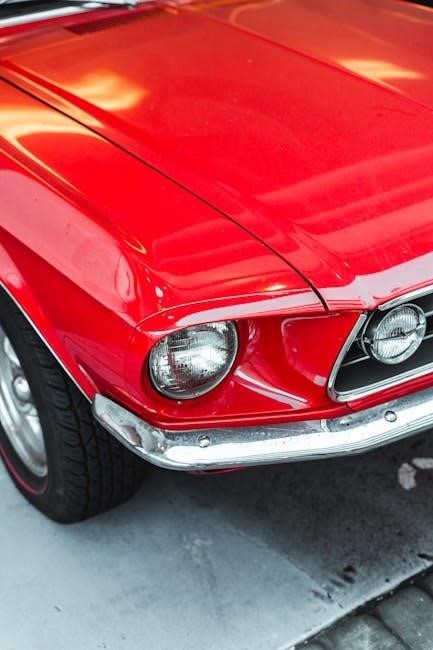
Paint protection film (PPF) is a clear, durable vinyl coating applied to high-impact areas like the hood, bumper, and mirrors. It shields the paint from chips, scratches, and environmental damage caused by road debris, UV rays, and acid rain; PPF is nearly invisible, preserving the car’s original appearance while offering long-lasting protection. Unlike ceramic coatings, it provides a physical barrier against damage, making it ideal for drivers who frequently encounter rough road conditions. Professional installation ensures proper alignment and adhesion, preventing peeling or bubbles. Once applied, PPF requires minimal maintenance and can be replaced without damaging the underlying paint. It’s a practical solution for safeguarding your vehicle’s exterior and maintaining its resale value.

Tools and Safety Precautions
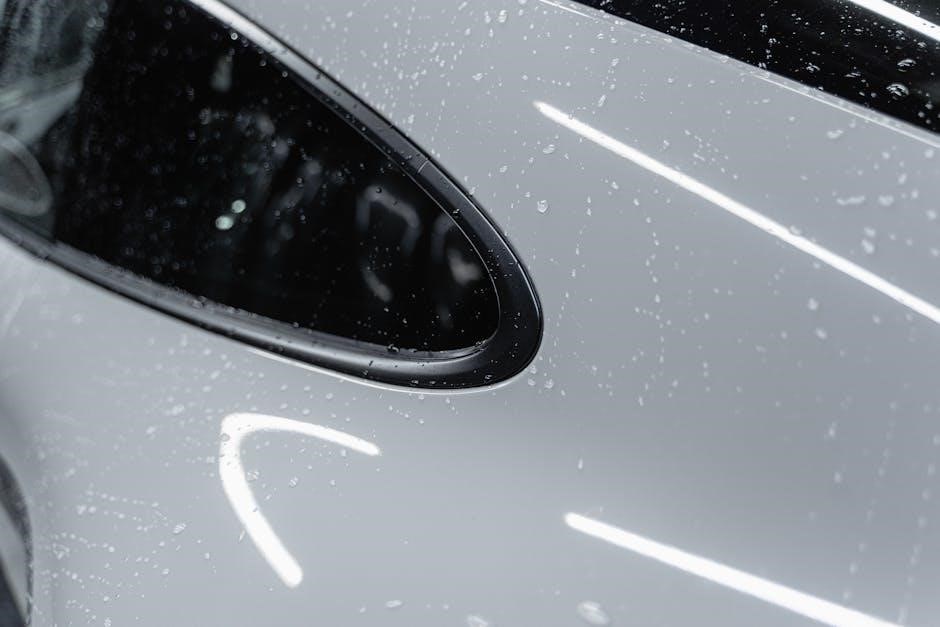
Essential tools include buckets, sponges, microfiber towels, polishes, and protective gear. Always use clean water, avoid harsh chemicals, and work in a well-ventilated area.
5.1 Essential Tools for Auto Detailing
Auto detailing requires specific tools to achieve professional results. Microfiber towels are indispensable for cleaning and drying surfaces without scratching. A dual-bucket washing system helps maintain clean water and prevents dirt from being redistributed. Soft-bristle brushes are ideal for cleaning wheels, emblems, and tight spaces. Paint correction often involves orbital polishers and buffing pads. Clay bars are used to remove contaminants from the paint, ensuring a smooth finish. For interiors, a vacuum with crevice tools is essential for thorough cleaning. Leather conditioners and fabric cleaners are must-haves for upholstery care. Glass cleaners and lint-free cloths ensure streak-free windows. Trim protectants and wheel cleaners round out the essentials. Protective gloves and eyewear are crucial for safety. Having the right tools ensures efficiency and quality in every detailing process.
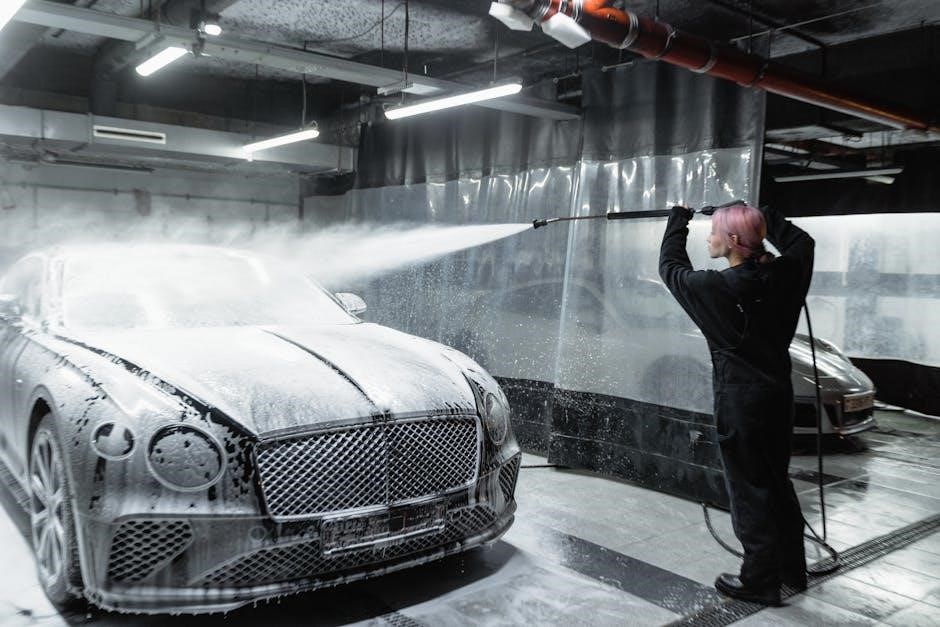
5.2 Safety Tips to Avoid Damage
When detailing a vehicle, safety is paramount to avoid damaging the car or injuring yourself. Always wear protective gloves and eyewear to prevent cuts and chemical splashes. Work in a well-ventilated area to avoid inhaling strong fumes from cleaning products. Use products as directed; never mix chemicals, as this can create harmful reactions. Avoid using high-pressure washes near sensitive areas like windows or moldings. Test cleaning products on small, inconspicuous areas first to ensure they won’t damage materials. Keep the work area clean and organized to prevent tripping hazards. Ensure the vehicle is on level ground and apply the parking brake for stability. By following these safety tips, you can protect both the vehicle and yourself during the detailing process.
